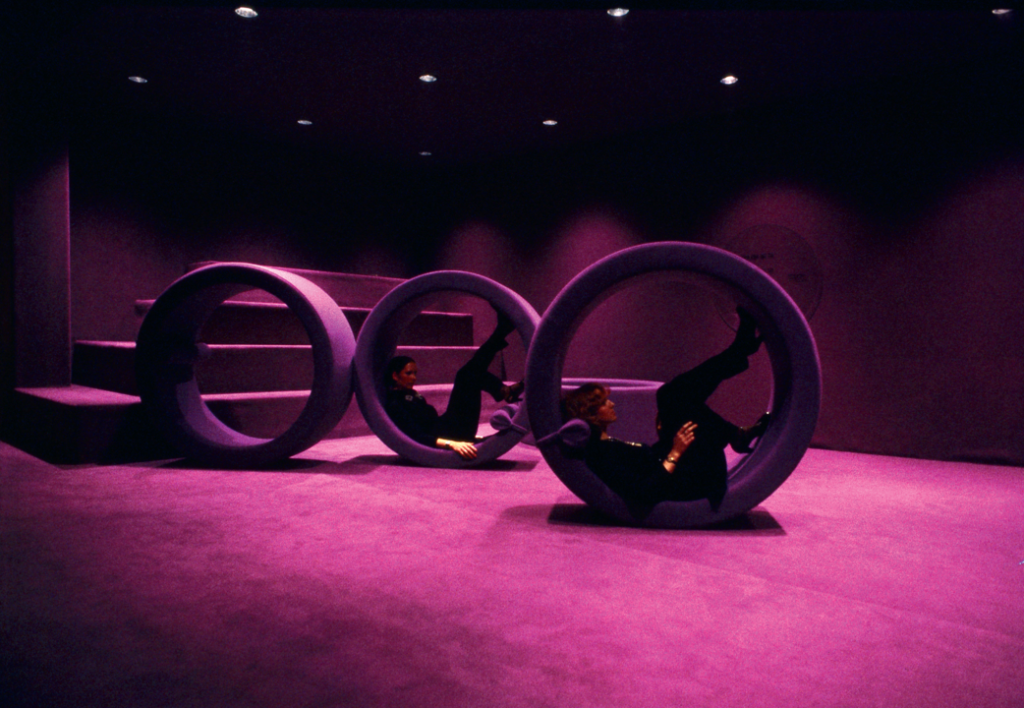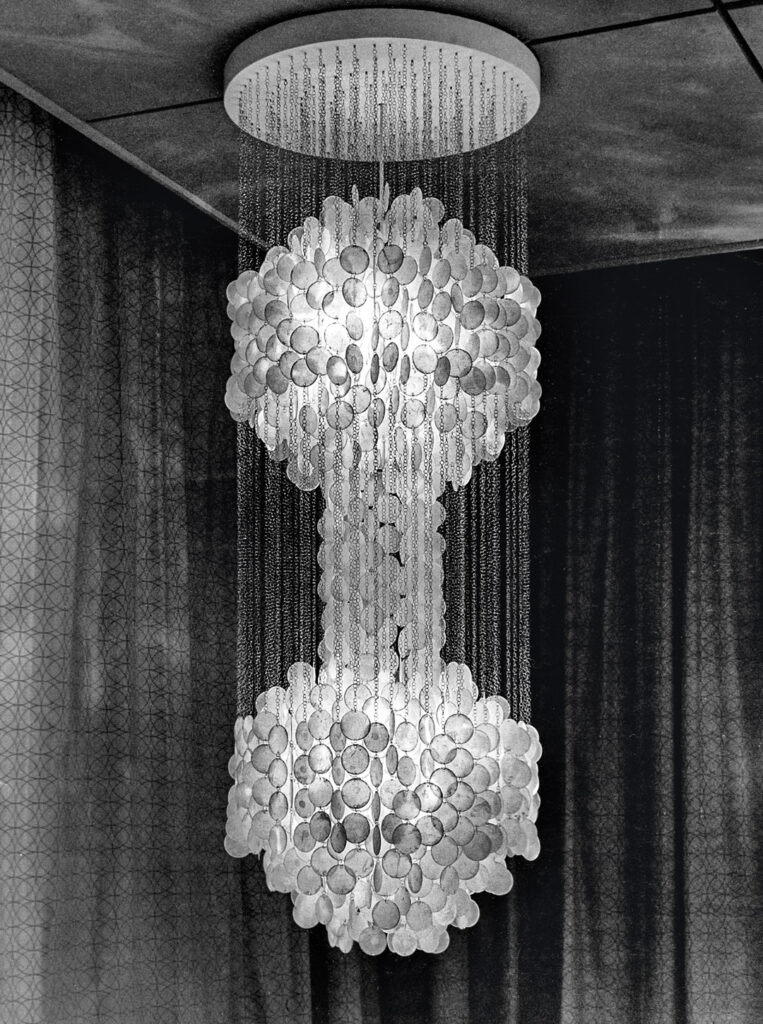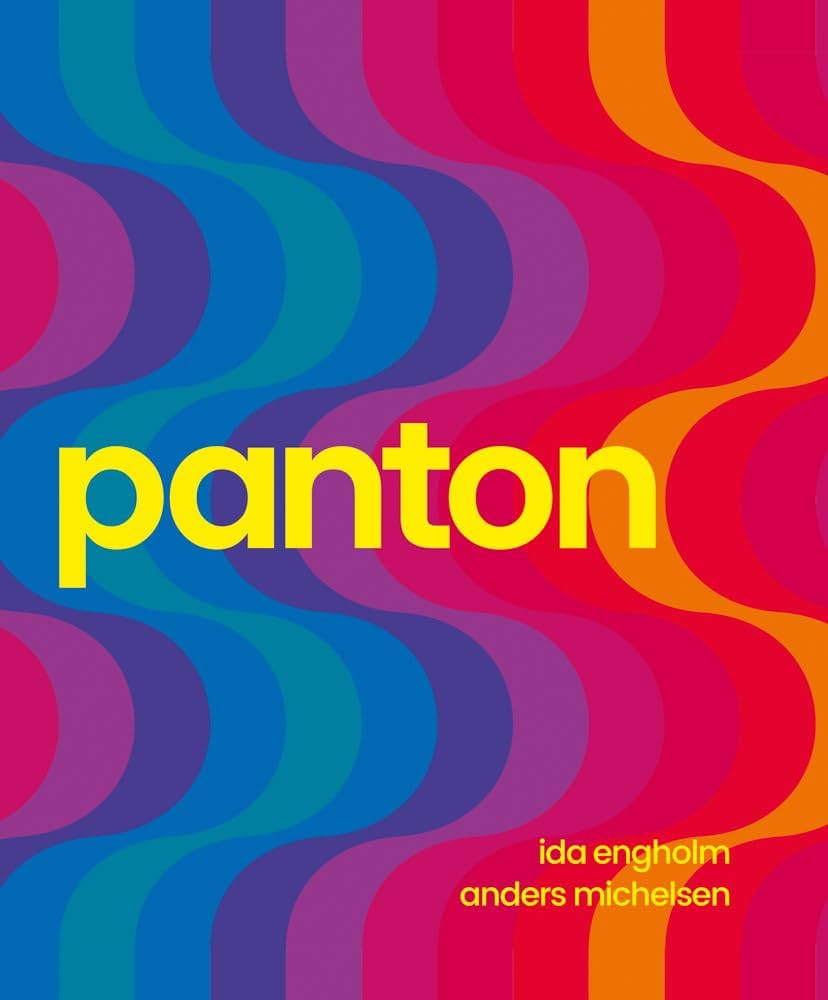
When we look back on the bright and colorful interiors of Danish designer Verner Panton (1926-1998), they may appear to us as too theatrical, too whimsical, and over the top. However, back in the 60s and 70s, Panton was considered a pioneer and visionary who succeeded in embedding the concept of time into his distinctive and memorable spaces and objects. In fact, it is hard to believe that he was a Dane who started his career in Copenhagen with the eminent modernists Poul Henningsen and Arne Jacobsen. While both were profound influences on Panton, he took his vocabulary and the entire design agenda to new and ambitious horizons. In the monograph—recently published in its second edition by Phaidon—he is called “the nomad of Danish design, always on the search for new challenges in his work.”
In the most comprehensive text on Verner Panton to date, Danish historians Ida Engholm (associate professor at the Royal Danish Academy of Fine Arts) and Anders Michelsen (associate professor at the University of Copenhagen) have framed his brilliant oeuvre historically and conceptually, while providing a full list of his works.
I was first introduced to Panton’s work in the early 2,000’s when his legancy was rediscovered by the pioneers of the early days of the collectible design market. It was just a year or two after his death and he did not live to see his name rising again. One of the most spectacular aspects of Panton’s work is the way in which his objects can transform aesthetically when placed in contemporary interiors. I have lived with Panton’s pieces since; his long chandelier is a central piece in my minimalist apartment, and it feels perfectly at home. This is the same object that he created for one of his radical, psychedelic environments in the 70s, but it has the power to change. My kids grew up sitting on Panton’s Cone Chairs, which he first introduced in 1958. When I purchased them, they were in their original grass green canvas, and I recently reupholstered them in chocolate brown which has given them a whole new and cutting-edge look. To me, this is an example of the greatness of the pop design Dane and the timelessness of his genius pieces.
Panton produced his pieces with plastic, fiberglass, synthetic fabrics—the materials of the 60s and 70s during the Pop Art and Postmodernist eras, when mass production became the source of inpiration for art and design. His spaces and pieces of furniture and lights have become benchmarks of design, representing that era. He was daring like very few are, and he was not afraid to move outside of the modernist box that ruled the design world for decades. Panton had the ambition to forge design vocabulary for the zeitgeist and with that entered the pantheon of modern design.
The new monograph is a mandatory addition to any library with a focus on art and design. It follows the work of Panton and the evolution of his vision while placing it in a wider context. It transports the reader into the heart of the 60s, showing the way in which the symbolism of the time came to be expressed in Panton’s pioneering vocabulary. It is thoroughly researched and extensively illustrated with photographs, drawings, and advertisements from the official Panton archives. Panton once said that he wanted “to provoke people into using their imagination.” And is that not one of the key goals of every designer?















